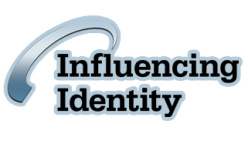Tag sizes can important when you wish to have everything conveyed clearly without making your tag too big to be comfortably wearable. Here are some considerations to keep in mind when setting up your tags to ensure their quality:
1. Logo size and placement
It’s a common issue for logos that are designed to be printed on larger areas to not show correctly when reduced. We recommend that you carefully check your proof to see if all logo elements are readable at the requested size before signing off on it. Logos can take up space for names, so tag sizes will likely be increased if you include a logo.
2. Maximum and minimum sizes
The minimum size for all tags is 2.75 inches wide by .75 inches high; The reason for this is that it is difficult to cut by hand with reliable accuracy, speed, and safety under this size. Â Anything over 8 square inches is considered to be a name plate.
3. Maximum size for Full Color
The maximum size we can print for Full Color is 3.25 by 2 inches, because the machine uses cards that are the size of a credit card.
4. Font
Certain fonts do not show up well at smaller sizes; If you’re set on one of these fonts, tag size may need to be increased.
5. Wear-ability
If your tag is too big, then it could be uncomfortable or distracting to wear. If this is a concern, you can request for us to send a first article to see how it looks and feels to wear before you order all your tags.
6. Length of names
If you require longer names or many credentials, it may be possible to fit everything on the tag by simply expanding the width.
7. Number of lines
Each line that is added will add some height or text size will have to be reduced. It is sometimes hard to balance these considerations if a lot of information or a large logo is required on your tags.
8. Frame sizes
Frames come in 3 styles: metal, black plastic, or picture frame. And 3 sizes: small, medium, or large. Tags must be made exactly to the frame size or they will not fit.
We hope that you will keep these considerations in mind the next time you order some name tags to maximize their effectiveness. Our goal is to give you the highest quality products we can, and part of that is informing you about what works best and why.
Get your name tags today!
